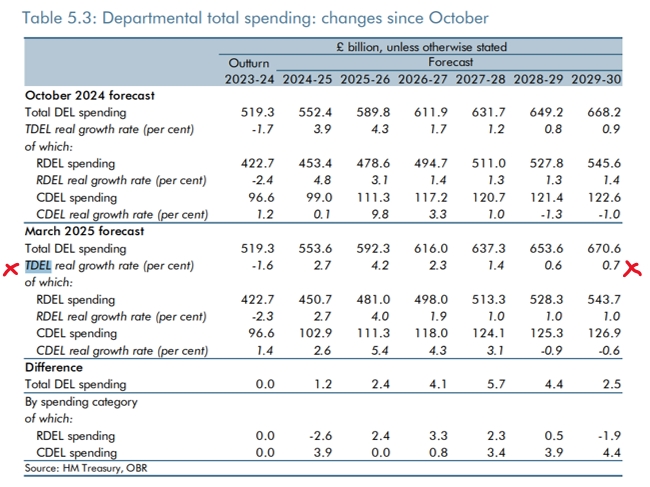By Michael Burke
The government is in denial about its own austerity policy. It repeatedly claims that it is not reproducing the failed austerity policies of the Tory years. Ahead of the Spending Review this week, it is important to set the record straight – to show that the government’s policy is austerity and attempts to do that are misleading and counter-productive.
The latest effort is by Torsten Bell MP, who holds two junior ministerial posts at the Treasury and the Department for Work and Pensions. He previously worked as director of policy for Ed Miliband when he was leader of the Labour party and, more recently as a principal of the Resolution Foundation. He is widely considered to be one of the more astute economic brains in the Starmer government. So, his intervention in the government campaign of denial about austerity is worth consideration.
That intervention came in the form of a chart on his ‘X’ account, reproduced below, as well as a longer explanatory video which is also available there.

The chart shows Total Departmental Spending (TDEL) from 2009/10 to projections under the Labour government until 2029/30. On the face of it the red line of Labour planned spending clearly shows a rising trend, which seems to strongly supports the claim that austerity is over.
However, a closer examination of the chart does not support Bell’s contention. The dark black line starts to rise in in 2016/17. On this basis, “we” did not end austerity. The Tories did 9 years ago. All of us who have been complaining about austerity are fools! Austerity ended years ago, according to Bell’s chart.
Yet public services have deteriorated, NHS waiting lists lengthened and living standards have deteriorated over that time. Austerity has been very much in place over the entire period.
The reason austerity did not end in 2016/17 despite real terms increases in government spending is because those increases were not sufficient to cope with the pressure of a rising and ageing population, or to reverse the damaging effects of previous austerity.
Under current plans, the Labour government will continue that trend. Spending will increase, but insufficiently to end austerity. The table below is taken from the March 2025 Economic and Fiscal Outlook from the Office for Budget Responsibility.
Table 1. Total Departmental Expenditure Limits

The table shows that the government plans for TDEL (Total Departmental Expenditure), highlighted, are extremely weak, beginning with a cut over 1.6% in the last year of the Sunak government by ending with just 0.6% and 0.7% growth in the last 2 years of this parliament. Over the entire period, growth in Departmental spending will be little over 1% on average per year.
Of course, it is possible that the Spending Review will show a complete change of heart by the government, a recognition that austerity does not have the claimed effects and that large-scale public investment is necessary to lead economic recovery. But the signs do not look encouraging.

Recent Comments